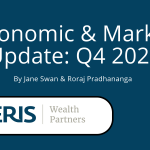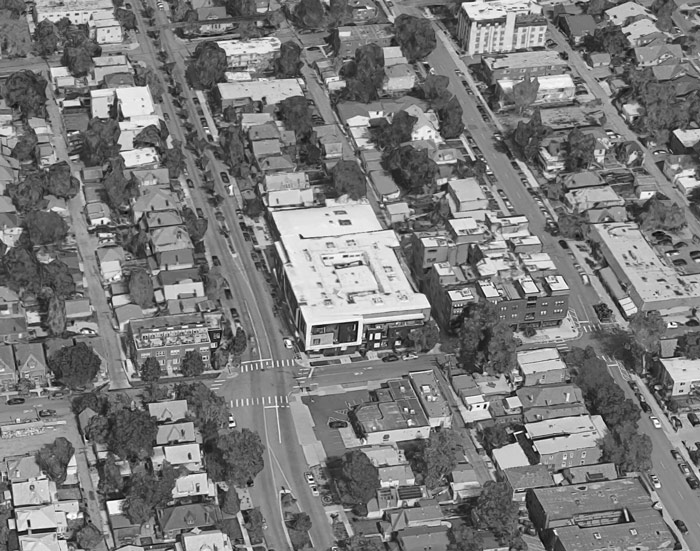6 Trends Shaping the Future of Impact and ESG Investing
The Impact and ESG investing space is growing and changing rapidly. These are a few of the emerging trends that we are paying close attention to at Veris Wealth Partners.
1. The Mainstreaming of Impact and ESG Investing
Environmental, Social and Governance (ESG) and impact funds/investments have performed very well, and interest in impact investing is growing at a tremendous rate. Globally speaking, ESG assets are expected to grow to $41 trillion by 2022 and $50 trillion by 2025. The United States has now surpassed Europe in ESG growth. ESG assets in the US are on track to grow to $20 trillion in 2022.1 According to the Global Impact Investing Network (GIIN) survey, impact investing assets under management (AUM) increased from $502 billion2 in 2019 to $715 billion in 2020.3 The IFC estimates the impact investing market to be even larger at $2.3 trillion including $1.3 trillion that are managed by publicly owned Development Financial Institutions (DFIs) and national/regional development banks. Of the $2.3 trillion in AUM, $636 billion represented core AUM managed by privately owned asset managers and DFIs where intent, contribution and impact measurement are identified. This is an increase from $505 billion in 2019.4
It is really exciting to see our sector headed towards the mainstream, but we aren’t there yet. My inner skeptic sees interests in ESG and impact investing that are driven solely by increasing consumer demand and not by intentionality, which is important for cohesiveness and long-termism – qualities that define our industry. A recent survey by HSBC found that of 528 institutions with $12.6 trillion in AUM indicated that 33% of respondents said attracting capital or inflows is the strongest reason for integrating ESG followed by 26% stating competition or peer pressure, not because of their convictions or commitment to environmental and social sustainability.5 I believe not all of these assets represent authentic ESG or impact focused investments or full ESG integration. Not all of these are hundred percent ESG integrated and some are exclusionary only.
Veris is an impact focused wealth management firm, and we take extra steps to determine authenticity. We believe the fund managers we invest our client assets with do care. For them it is not just about growth in assets under management. We believe there is a difference between what our clients are invested in and the overall market.
2. Greenwashing and Impact Washing
We believe more firms are claiming to do impact investing without the intentionality and/or additionality. People have valid concerns about greenwashing and impact washing, but I believe we also need to worry about losing the concept of authenticity, accountability and why we truly believe in impact investing. Nowadays, it feels as if everyone is claiming to have an impact – how do we differentiate and truly validate those claims?
I believe our industry must push for verification of impact, measurement and management – which is a huge challenge due to lack of data. Despite the challenges, many of us are clamoring for more standardization and definitions. I believe mandatory disclosures, reporting and regulatory changes like the EU’s Sustainable Finance Disclosures Regulation (SFDR)6 and similar regulatory changes that are being considered by the SEC would help.
On the public equities and fixed income side of the investing – I’m paying close attention to challenges around data. We are asking, how can we best utilize the ESG data that we have and how can they be forward looking instead of backward looking? How do we truly integrate ESG factors in the investment process and measure and manage impact?
On the private investment funds, how do we truly define and assess whether the investments have concretely contributed to additional social and environment impacts? However, all these questions shouldn’t take away the focus and spotlight from the great work many impact investors are doing and the need to do more.
3. Innovation and Intersectionality
While the push for standardization is much needed, I also believe the field must continue innovating on better ESG, sustainable and impact investing solutions. I believe we need targeted solutions that focus on overlooked impact themes and especially those where capital flow is very minimal today.
I also believe we need more focus on intersectionality, especially with complex challenges that are often intertwined – climate change, health and wellness, mental health, wealth building, employee ownership, etc. I see lots of discussion around environmental/climate justice but our industry doesn’t have targeted investable solutions yet.
4. Active Ownership and Policy
Even with increasing numbers of people – especially younger generations – supporting action on climate, racial inequities, impact and ESG investing, there appears to be a huge partisan divide in this country, with one party seemingly holding back policy changes.
I believe we need sound government policies and a friendly policy environment to scale impact and ensure the progress we make will not be lost if future administrations change the rules.
I believe we need to amplify the voices of the communities that are directly impacted and engage with portfolio companies on various ESG topics and challenges and help guide them to be agents of impact and change.
5. Commitments and Authenticity
Many organizations have made public commitments around net zero7 and equity, diversity and inclusion in the last couple of years.8 What is missing is the details as to how these organizations plan to get there.9 This is further supported by our conversations with our approved managers as they analyze policies and data of the companies they invest in.
I believe we need a heavy lift on these issues now – we don’t have until 2050 or later to get to net zero based on our current trajectory. We also need to ensure that EDI is not an exercise in box checking.
6. The Changing Role of Impact Investors
I believe our industry is facing some existential questions, including:
- What does it really mean to be an impact investor?
- Are we perpetuating extractive practices through what we currently call impact investments and various financial instruments we use?
- What is the role of impact investors in providing catalytic and patient capital? Do we wait for government and quasi government entities to de-risk projects before we move in or do we become the de-riskers?
As we think about these important questions and have conversations about the answers, I believe our industry must continue doing the important work we are doing. We need to create innovative financial instruments to provide capital to emerging solutions to ensure individuals, communities and solutions who need access to capital the most have access to it.
Roraj Pradhananga is a Partner and the Senior Research Analyst at Veris Wealth Partners. He leads our Investment Research team, is a voting member of the Investment Committee and Chair of the Equity, Diversity & Inclusion (EDI) Committee.
References
2 https://thegiin.org/assets/GIIN_2019%20Annual%20Impact%20Investor%20Survey_webfile.pdf
3 https://thegiin.org/assets/GIIN%20Annual%20Impact%20Investor%20Survey%202020.pdf
5 https://www.gbm.hsbc.com/en-gb/feed/sustainability/esg-sentiment-survey
7 https://www.un.org/en/climatechange/net-zero-coalition
8 https://www2.deloitte.com/us/en/insights/topics/talent/building-employee-trust-dei-programs.html, https://www.cultureamp.com/blog/dei-2022-trends, https://www.cultureamp.com/resources/report/2022-workplace-dei-report, https://www.cnbc.com/2020/06/11/companies-are-making-bold-promises-about-greater-diversity-theres-a-long-way-to-go.html
The information contained herein is provided for informational purposes only, represents only a summary of the topics discussed, and should not be construed as the provision of personalized investment advice, or an offer to sell or the solicitation of any offer to buy any securities. Rather, the contents including, without limitation, any forecasts and projections, simply reflect the opinions and views of the author. All expressions of opinion reflect the judgment of the author as of the date of publication and are subject to change without notice. There is no guarantee that the views and opinions expressed herein will come to pass. Additionally, this document contains information derived from third party sources. Although we believe these third-party sources to be reliable, we make no representations as to the accuracy or completeness of any information derived from such third-party sources and take no responsibility therefore.








